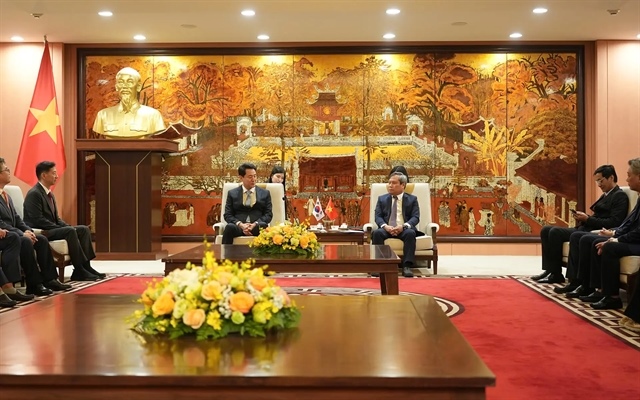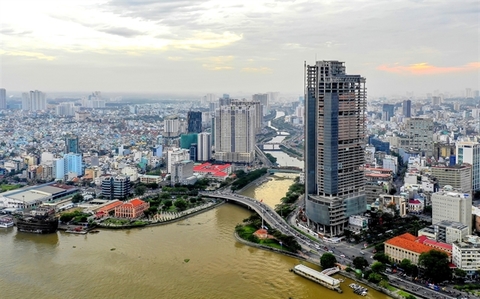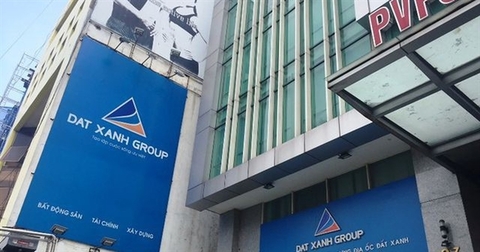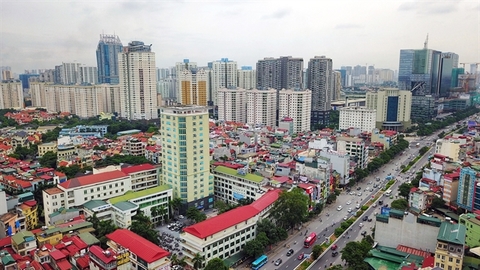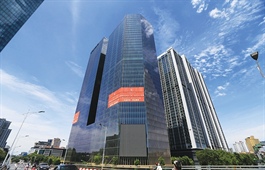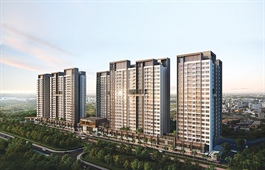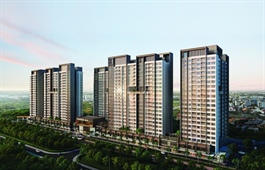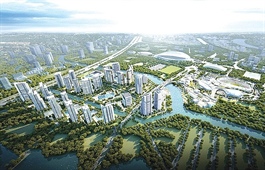Green building trend severely undervalued in local real estate
Green building trend severely undervalued in local real estate
With the runaway growth of urbanisation and the real estate sector in recent years, renovation and construction of green and energy-efficient buildings has become a key trend in Vietnam, even though the true concept of going green is still vague.

Green building trend severely undervalued in local real estate
|
Besides COVID-19, the second key word of the year is “green building” but many developers and consumers are still hazy on the concept. A “green” building is deemed one that, in its design, construction, and operation, reduces or eliminates negative impacts and can create positive impacts on the climate and natural environment. Green buildings preserve precious natural resources and improve quality of life.
However, in Vietnam the concept is sometimes confused with buildings covered with green trees only, sporting the usual image of a resort or an eco-urban area. Meanwhile, key features such as the efficient use of energy, water, and other resources, use of renewable energy, pollution, and waste reduction measures, and good air quality indoors are glossed over.
The 20-year-old Somerset Chancellor Court building, a complex of offices and serviced apartments in the heart of Ho Chi Minh City, has recently undergone a renovation to improve energy efficiency, leading to it being granted a green building certificate by the Ministry of Construction (MoC).
To gain this certification, the old building has seen extensive upgrades of its lighting and air-conditioning systems as well as replaced old equipment with the latest technologies.
Hoang Anh, engineer of the MoC’s energy efficiency in commercial and high-rise building (EECB) project shared, “The building has received consultancy from EECB, which identified three key solutions. So far, the building has implemented one of these by replacing two inverter chiller systems, saving about 227 kWh per year, equivalent to 207kg of CO2 emissions per year.”
The power meter for the chiller system has also been put into operation to monitor energy consumption. “Once the renovation is completed, the building will be able to save around 711 kWh per year, equivalent to 649kg of CO2 a year,” Hoang Anh added.
Preparing legal grounds
The MoC, with support from the Global Environment Facility through the United Nations Development Programme (UNDP), has been promoting the 2016-2021 EECB project on improving energy efficiency in commercial and high-rise residential buildings.
“Green buildings and energy-efficient real estate projects have received a great deal of global attention in recent years and the latest moves from the government show that Vietnam is refusing to be left behind. People today pay attention to not only projects featuring fair value but also comfort, health, and environmental benefits. This motivates investors to integrate green elements and energy efficiency features into their projects,” said Vu Ngoc Anh, director of the Science-Technology and Environment Department of the MoC.
While Somerset – like many certified green buildings – is reporting gains from its eco-minded renovation, according to the International Finance Corporation (IFC), by the end of the third quarter of 2020, certified green buildings in Vietnam only numbered 155 – a sparse figure compared to other Southeast Asian countries.
In its recently updated Nationally Determined Contribution, the Vietnamese government has committed to reducing greenhouse gas (GHG) emission by 9 per cent on its own (compared to the business as usual scenario) by 2030, which can be improved to 27 per cent with international support.
The government has also shown strong commitment by joining the Kyoto Protocol and more recently, the Paris Agreement. Accomplishing its targets under these schemes requires the enhancement of green and energy-efficient buildings.
Accordingly, after the Law on Economical and Efficient Use of Energy was issued a decade ago, the MoC issued the National Technical Regulation on Energy Efficiency Buildings No.09:2013/BXD, to be brought in line with modern-day realities in 2017.
These commitments were enshrined in several policies this year, including Resolution No.55-NQ/TW from February providing orientations for Vietnam’s National Energy Development Strategy towards 2030 and outlook to 2045; Resolution No.140/NQ-CP dated October that set the specific tasks for energy saving and efficiency in the construction sector, and the revised Law on Construction 2020; as well as the Vietnam Energy Efficiency Programme 2019-2030 and the Construction Materials Development Strategy 2021-2030 with a vision until 2050.
These pieces of legislation are expected to set the grounds for the development of green and energy efficient buildings.
The way ahead
“Although Vietnam is already implementing its green building goals through several programmes as well as by organising the annual Green Building Week, it needs to enhance the promotion of green and energy-efficient development,” said Sitara Syed, UNDP deputy resident representative in Vietnam, adding that local authorities of all levels should pay more attention to promoting green features and materials, as well as green buildings in general.
Co-organised by the MoC and the UNDP as well as supported by the IFC, German organisation GIZ, and other agencies and institutions, the Vietnam Green Building Week 2020 during December 9-12 provided a forum for local and international experts, policymakers, and entrepreneurs to exchange their opinions and experiences on key topics, including policy development, master planning, as well as the design and operation of green and energy efficient buildings.
Deputy Minister of Construction Le Quang Hung also stressed that over past years, with cooperation and support from international organisations such as the IFC, the United States Agency for International Development, the UNDP, and the Global Environment Fund, the MoC has organised many training courses to enhance green design and construction practices while conducting studies on criteria for green buildings and urban areas.
“We believe that the MoC’s policies, guidelines, and activities like the annual Vietnam Green Building Week, will help effectively raise awareness among stakeholders and promote green and energy-efficient projects,” said Hung.
Throughout activities like technical seminars, field trips to Viettel’s green building, policy dialogues, plenary sessions, as well as exhibitions of buildings, materials, equipment, and technologies, the events of the Green Building Week showcased the efforts and actions of Vietnam in the implementation of international commitments on climate change and green and sustainable development.
Specifically, during the Policy Dialogue among the MoC, related ministries and other stakeholders – who have been making a great efforts to transform Vietnam into a greener, more environmentally-responsible construction market – shared specific and effective policy orientations to create momentum for the development of the green construction market across the country.
|
Nguyen Thanh Trinh-Sales director, Eurowindow JSC A high-rise building has both positive and negative impacts on the natural environment as well as its users. Green buildings offer a comprehensive solution to optimise environmental benefits as well as improve the comfort and the health of residents. To maximise its potential, we should understand what green buildings really are. Most Vietnamese consumers are not aware that the environment inside the building can be more polluted than outside and seriously affect their health. The latest report from the World Green Building Council has shown that the level of air pollution inside the building is 2-5 times higher than outside. Nguyen Thanh Tu-Lecturer, National University of Civil Engineering Homebuyers in Vietnam are often impressed by a good location or sensational amenities like a Japanese garden or an astronomical park – rather than green spaces that actually protect the environment. Decisions are based mainly on the images of luxury lifestyle, high-class entertainment, and consumption venues, instead of saving electricity and water, recycling, or conserving the environment. Many buyers are still evaluating life based on how much they pay for their apartment or villa. The majority of homebuyers choose property by the profit they can make from buying, selling, and leasing as well as the convenience of the location and the amenities rather than looking at whether the building is green or not. |





